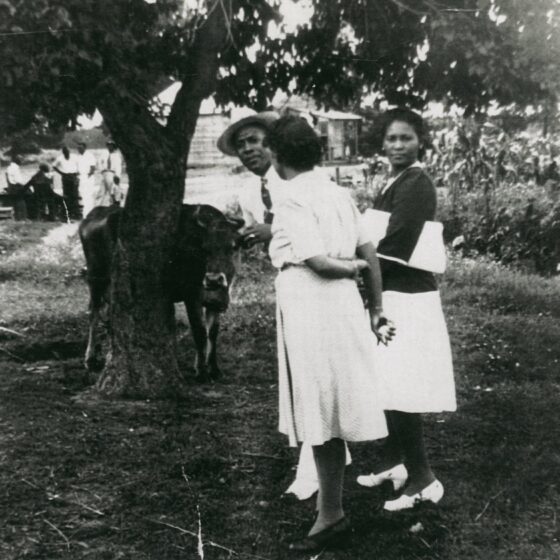Who was R.J. Reynolds?
Richard Joshua Reynolds was born in 1850 on a large tobacco plantation in Patrick County, Virginia. Tall and solidly built, R.J. impressed his family with his energy and keen wit, but he was often underestimated by others because of a lifelong stammer and difficulty with spelling, an indicator that he may have been dyslexic. Reynolds began manufacturing tobacco in 1873, first in a log cabin on the plantation and then in the upstart country village of Winston, North Carolina, population 443. He was primarily attracted to the area, he said, by “the benefit of railroad facilities, and on account of this being located in the center of the belt in which the finest tobacco in the world is grown.” Built with the $7,500 he had brought from Virginia, his “little red factory” began producing plug chewing tobacco on a one-hundred-foot lot.
Reynolds experimented with blending tobacco varieties and sweeteners, and he advertised aggressively throughout the eastern states. Prince Albert became the nation’s most popular pipe tobacco; Camel cigarettes, following in 1913, became the highest-selling cigarette. The population of Winston-Salem grew ninety-fold—becoming the largest city in North Carolina–between the arrival of R.J. Reynolds’s covered wagon in 1874 and his death in 1918. The company was led by a trusted managerial class that included several of his brothers and nephews; African American workers formed the majority of the payroll. These employees were attracted to the burgeoning tobacco factories by the relatively high wages and fair working conditions. R.J. Reynolds also contributed to churches, hospitals, and a medical school for African Americans, ensuring a stable workforce for his tobacco empire.
R.J. Reynolds remained a bachelor until the age of 54, when he married Katharine Smith. Together they developed Reynolda. In 1917, at the age of 67, R.J. and his family moved to Reynolda. He died the following year from what is now believed to have been pancreatic cancer. The tobacco baron was remembered for his even-handedness in dealing with employees and competitors. One obituary claimed that “R.J., with all his prestige and wealth, is as plain and as modest as a country boy.” R.J.’s tobacco factories contributed significantly to the industrial renewal of the so-called New South, and helped bring prosperity to an entire region.
Reynolda revealed video series
See all videosFrom the 1910s to the late 1950s, the segregated community of Five Row was home to Reynolda’s African American farm workers and their families.
A new type of Southern woman, Katharine Reynolds combined the traditional role of wife and mother with progressive practices on healthy living, education, and agricultural reform.

